- Home
- Deborah Blum
The Ghost Hunters Page 17
The Ghost Hunters Read online
Page 17
Both women now struggled to hold an audience. Their spirit-rapping technique had become an antiquated relic. Years of increasingly mediocre demonstrations had cost them their following. Bitter, ignored, and impoverished, the sisters comforted themselves with alcohol. And both suffered for it, in health and reputation. Acquaintances described Maggie as “a dissipated looking wreck.” The few sitters who attended Kate’s slate writing evenings reported she was so drunk that she kept dropping the slates.
Nevertheless, a new scientific commission had asked to test Maggie’s powers, and she had agreed. Funded by a $60,000 bequest to the University of Pennsylvania from Philadelphia industrialist Henry Seybert, the commission’s stated purpose was to investigate the most credible supernatural claims and try to discover what lay behind them. Publicly, the Seybert Commission presented itself as a model of scientific objectivity. Privately, the scientists on the commission saw a good opportunity to further discredit the continued appeal of the supernatural. In a letter to James, the commission chair, University of Pennsylvania psychologist Howard Furness, described himself as a viper warmed by spiritualist nonsense.
With its first report, released in the spring of 1887, the Seybert Commission predisposition became apparent to all. The commissioners had chosen exactly the kind of mediums that the SPR thought untrustworthy: psychics for hire, professionals with a known act, from slate writing to ghostly materializations. They’d even made a point of investigating performers long discredited, such as the slate writer Henry Slade, now also known as a notorious alcoholic and a testament to the seedy nature of the professional medium trade.
As for the once-admired Maggie Fox Kane, the commission members found her an obvious joke. When she met with the commission members, faint thumps did shake the floor. They let the medium interpret them. She announced that the knocks came from the late Seybert himself, indicating his wish that the commission be thorough and patient. The members were unimpressed. In a more stringent test, they stood her on glass tumblers, two under each foot, effectively immobilizing her. This time the only person in the room who claimed to hear raps was Maggie Kane. In the commission report, her claim was followed by a stenographer’s note: “No intimation is given that the rap here spoken of was heard by anyone other than the Medium herself.”
In his concluding remarks, Furness sent his own message to other investigators, including James and his friends: Don’t waste your time. “In my experience, Dante’s motto must be inscribed over any investigation of Spiritualism and all hope must be abandoned by those who enter on it.”
The report, published in the spring of 1887, produced a rare united reaction from the dedicated spiritualist community and the dedicated psychical researchers. Since serious investigations had started, the two groups had become increasingly alienated. True believers had resigned in mass from the British society after Hodgson completed his slate-writing expose; Nora Sidgwick’s response was that the group was better off without them. American spiritualists had begun referring to “Professor James and his ilk” after his exposes of Boston mediums. James had responded by publicly accusing them of defending fakes “through thick and thin.” But regarding the Seybert Commission, both sides agreed that the commission had only pretended to investigate, that the result was one more message of contempt from the mainstream science community.
James and his SPR colleagues worked, fruitlessly, to counter the bad publicity generated by the Seybert report. They wrote letters to their intellectual peers and to the press, pointing out that the Seybert Commission seemed to be deliberately investigating only those medium tricks already exposed time and time again. Why didn’t the commission spend a little time and money on the phenomena that still proved puzzling? Myers, while politely praising the skeptical approach, suggested an investigation of automatic writing and other “perplexing phenomena which do admittedly occur but which need not be interpreted in the Spiritualist sense.” And James wrote directly to Furness, urging an investigation of rare mental mediums such as Leonora Piper. Furness replied that he’d met with Mrs. Piper once and had not been impressed.
Anyway, Furness said, the terms of Seybert’s bequest barred him from spending money on such experiments. He wouldn’t bother to explain, he added in a sardonic postscript. Someday, when James had extra time, he could get Mrs. Piper’s Phinuit to hunt up the dead industrialist and “get all the details directly.”
THERE WAS NO LACK of grounds for such cynicism. As positive as the Sidgwick group was about their case for telepathy, they’d found plenty of fraud even in that area, thanks in part to the dogged and thorough Richard Hodgson.
Even from across the Atlantic, Hodgson had a gift for stripping away the claims of British psychics. Early in 1887, the Sidgwicks discovered a stage psychic who appeared to possess astonishing telepathic gifts. When Sidgwick wrote enthusiastically to Hodgson, though, his former student replied with a warning about some new tricks in the “telepathic communication” business. Thus armed, Henry and Nora discovered that the “acumen of Hodgson had already suspected the code of signals,” which consisted mainly of a confederate systematically sighing, groaning, or puffing out a certain number of breaths—three breaths for clubs, four for diamonds and so on.
The same vigilance had led the Sidgwicks and Gurney to make a dismaying discovery about some of William Barrett’s favorite telepathic study subjects, three daughters of a Presbyterian minister. The girls had been regarded as particularly upright in their family circumstances, and some of Barrett’s favorite experiments had involved them. These were the girls who had so remarkably responded to his mental requests for oranges and hairbrushes.
But in the ten years since Barrett first discovered them, Alice, Mary, and Maud Creery’s abilities had become far less remarkable. “The children regretfully acknowledged that their capacity and confidence were deserting them,” Gurney wrote. Even worse, during card-reading tests, done shortly after the publication of Phantasms, Alice and Mary were caught signaling to each other.
Gurney had been worried about the girls’ later test results. When carefully watched, in situations similar to Barrett’s first work in separated rooms, they were now getting things consistently wrong. He decided to lay a trap, putting them in the same room, giving them an opportunity to cheat rather than admit failure. During an evening at the Sidgwicks, Gurney and both of his hosts observed the girls watching each other’s eyes before “guessing” a card.
When confronted, Alice and Mary tearfully confessed an elaborate strategy of eye movements—upward look for hearts, down for diamonds, to the right for spades, left for clubs, supplemented by different finger positions to indicate the value of the card. They confessed that if they couldn’t see each other, they signaled by noise: coughing, sneezing, loudly yawning, and shuffling their feet. “I am very sorry to have to tell that we have undoubtedly detected the two Creery girls ... in the use of a code of signals to produce spurious ‘thought-transference’ phenomena,” Sidgwick wrote to Barrett. “Or rather two codes.”
The SPR creed was strict on this point: once she was caught cheating, every claim by a particular psychic or sensitive became suspect. Sidgwick pointed out to Barrett that the girls’ detailed code system obviously dated back some time. He planned to strike all the Creery results from their catalogue of evidence. Barrett’s pen fairly flew over the paper in angry defense. In the first experiments, the girls did not act as agent and percipient; he asked them to read his mind or that of another investigator. In those tests, the daughters had no forewarning and no one to communicate with. He doubted that they’d worked out signals for randomly chosen cups and saucers.
“I expect the natural alarm which the Cambridge Expts. has caused in our minds is probably apt to make us unjust in our judgment of the earlier experiments,” he wrote to Sidgwick. “For my own part I am convinced that enough entirely trustworthy experiments exist with the Creery family to make it unwise to expunge the whole of their evidence.”
The later, t
roubling results might be attributed, Barrett suggested, to what the psychical researchers would come to call the “decline effect,” in which abilities seemed to lessen with time. One of the participants in Gurney’s experiments on taste transference, the middle-aged owner of a Liverpool drapery firm, said that he could tell that his ability to “transmit” was weakening. He’d decided to retire from telepathy work. Almost all the subjects the investigators trusted reported the same thing, the transient, come-and-go nature of those mental connections.
The SPR investigators met to discuss this new challenge. Their subjects usually followed two different paths. The best ones quit after a few years, saying that it wasn’t the same, complaining that whatever gifts they’d once had seemed to wear away. Others, reluctant to lose their clientele and reputation, developed cover strategies. One could even charitably make that case for the Fox sisters. But Sidgwick wasn’t inclined to be charitable, not about the Fox family, and not in general. Fraud was the bane of every good result the SPR reported; it weakened every argument they put forth. A full retraction of all Creery experiments was ruthlessly published in the SPR journal.
The real problem, as Sidgwick noted in his diary, was not the lack of untarnished results. They still had plenty of those. He was more than familiar with “the transient glow of scientific enthusiasm.” But the society lacked the sustaining warmth of a good explanation, a workable, testable theory for how that mental transfer occurred. That such a theory remained so elusive was troubling in the extreme. “If only I could form the least conception of the modus transferendi!”
IN BOSTON, the ever-organized Hodgson arrived at his ASPR office at 9:30 a.m. six days a week. The first mail always brought a dozen letters or more. He promptly began reading and making notes. As instructed, at 10:30 a.m., Hodgson’s clerk brought him a sheaf of typewritten letters dictated the previous day for him to read and sign. He then dictated answers to the newly received letters. She mailed the signed letters. The two of them dealt with correspondence and other office business until 1:00 p.m., when she took her remaining work to be completed at home.
He then dashed over to the Tavern Club next door for a quick snack, usually hot tea and a dish of dates. He liked to schedule meetings and interviews in the early afternoon, go back to the office, and scribble more notes until the second mail delivery came. He’d take another quick dinner break, but usually he hadn’t finished making notes on those letters till late, didn’t get home till 11:00 p.m. or so, and even so brought a few more letters with him to finish. If he had time, he saved a little energy to write to friends and read a little philosophy or poetry for pleasure.
He didn’t complain to James or to the Sidgwick group back in England. Only in private, to his old friend, did he acknowledge what his life was becoming: “In one sense, I am sacrificing myself on the altar of psychical research,” he wrote to Jimmy Hackett.
At least he’d finally allowed himself one day off a week. He did not do psychical research work on Sundays, as he once had, but tried to relax—reading a biography of Shelley, going sledding with friends in the winter, swimming and hiking in the summer, but often, after a week of psychical research, he liked a solitary walk as much as anything. No wonder he had no woman in his life.
“I am perfectly sick of seeing so many people and shouldn’t visit more than two or three if I were here as a private individual. But it is all for psychical research. Great must be my reward in heaven!”
The detectives following Leonora and William Piper had provided Hodgson with a startling report. After a month of surveillance, they had discovered nothing, absolutely nothing.
Neither Mrs. Piper nor her husband had been heard asking questions about sitters; they’d had no mysterious meetings, made no unexpected journeys, checked out no past issues of newspapers from the library, and visited no cemeteries—all common practices of mediums gathering information about potential sitters. Further, Mrs. Piper had no detectives in her own employ, busily supporting Phinuit’s insights and explanations.
To Hodgson’s surprise, Mrs. Piper did not find this clearance to be good news. She found it embarrassing and insulting. As she angrily told him, and then William James, respectable people did not find that detectives had trailed them around town. In a letter to James, she threatened to quit the whole research program. She was humiliated, and she was “sorely tempted” to have nothing to do again with his new ASPR secretary or any of the rest them. It took all James’s diplomatic skills to smooth her down. He repeated his own respect for her, and teased her to see the silly side of detectives fruitlessly trailing such a sober couple, as William went to his department store job and Leonora ran errands to the baker and the greengrocer. “I hope neither you nor your husband will take the thing seriously. It has its very comic side and you are the ones who can best afford to laugh at it.”
As for Hodgson, James told her, if they were ever able to understand her gifts, ever able to impress their critics with them, he was their best hope. James himself had been doubtful of the tough-minded Australian at first. But he had come round to Gurney’s point of view. Hodgson, he wrote to Mrs. Piper, is “perhaps the most high-minded and truthful man I know.”
LEONORA PIPER BECAME Richard Hodgson’s personal obsession.
He paid the news seller in the Pipers’ neighborhood to limit the family’s access to information, only deliver morning newspapers on days when no sitting was scheduled. He hovered over the house like a bird on a nest, ignoring even the worst weather in order to maintain his watch. The winter of 1888 was one of the worst in history; the blizzards that swept the East Coast in March would kill more than 400 people. Hodgson remained undeterred. When conditions were so dismal that the Pipers’ hilly street was just a glare of ice, he borrowed a sled and coasted back down toward the train station, three-fourths of a mile through the blurring cold.
He made a memorable and unnerving impression on five-year-old Alta Piper when he loudly lectured one visitor who had made the mistake of leaving a wet umbrella in the downstairs umbrella stand.
As she recalled it, he was shouting, “You idiot! Haven’t you more sense than to do a thing like that? Don’t you know you might be accused of being in collusion with Mrs. Piper if you leave your umbrella there?” It could be that she’d concealed a note in the folds, to be plucked by one of the daughters and slipped up to the medium. And even if she hadn’t done that, the possibility would ruin her sitting. “Bring your umbrella up, even if it is wet, and in future mind what you’re about.”
Visitors couldn’t use their real names or provide any personal information to Mrs. Piper. Hodgson sat in a corner, glaring, making sure they didn’t. Since the ASPR couldn’t afford a stenographer, he took notes himself, pushing his bedtime back to laboriously transcribe his scribbles into readable transcripts.
He was doing an admirable job, James said, but “one man can’t do everything, and is well nigh single-handed in the matter of investigation.” James knew he was providing little support. His publisher, Henry Holt, was still berating him about the unfinished psychology book, and there were the usual teaching and research duties at Harvard. He and Alice had a fifth child, a baby daughter named Margaret. There was the apparently never-ending job of remodeling the old house at Chocorua.
James deliberately made time where he could to meet with Hodgson and even visit a few other mediums with the Australian. He was increasingly annoyed by the attitude of his own profession toward such work. The Seybert Commission had squandered its opportunity, and the ASPR researchers hadn’t been much better.
“IT IS A MERCY that Hodgson exists,” Gurney wrote to James in late May. “I cannot help being glad that he is likely to stay a bit longer with you, though he will be very welcome when he returns.” Like James, Gurney was mixing other interests with psychical research. He’d published a book of essays on medicine and philosophy for the pure pleasure of writing out the ideas. He had in mind next to do a book on hypnotism, which he thought offered a fascinating way
to understand the human mind as well as to explore questions of mental communication.
He wrote of all those plans in an answer to a letter from James, who had liked the philosophy book very much and praised its graceful prose and the thoughtful way Gurney had linked questions of mind and health. The message prompted Gurney to urge James to visit again soon: “Are you not nearly due again on this side of the Atlantic? What a joy it will be to talk again, such a number of new things to talk about! God bless you!”
It was barely a month later, on Saturday, June 23, 1888, that Gurney drove down to the resort town of Brighton, where he had been investigating a haunted house.
According to newspaper reports, he checked into the Royal Albion Hotel, a white wedding cake of a building directly opposite the bustling Brighton Pier with its carnival of penny mechanical games. He dined in the hotel coffee room and went to bed at about 10:00 p.m.
By two o’clock Sunday afternoon, he had not emerged from his room and had not responded to repeated knocking by both the maid and hotel manageress. They tried the door. It was locked from the inside. They called for the police to break the lock. The officers found Gurney dead in the rumpled bed, lying on his left side. His right hand held a small waterproof bag, a sponge bag used to hold toiletries, over his face. His mouth and nostrils were covered by it. A tiny bottle, containing a few drops of clear fluid, lay on the floor by the bed.

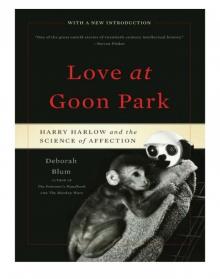 Love at Goon Park: Harry Harlow and the Science of Affection
Love at Goon Park: Harry Harlow and the Science of Affection The Poison Squad
The Poison Squad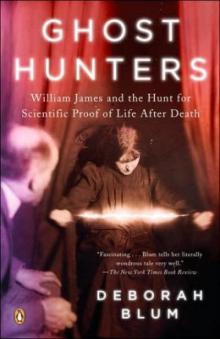 Ghost Hunters: The Victorians and the Hunt for Proof of Life After Death
Ghost Hunters: The Victorians and the Hunt for Proof of Life After Death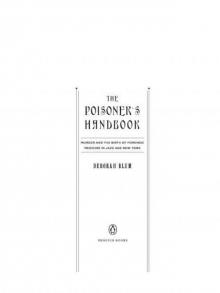 The Poisoner's Handbook
The Poisoner's Handbook Angel Killer
Angel Killer The Best American Science and Nature Writing 2014
The Best American Science and Nature Writing 2014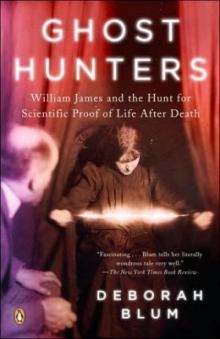 The Ghost Hunters
The Ghost Hunters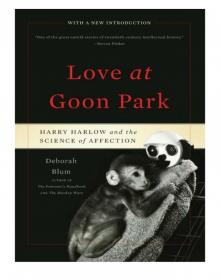 Love at Goon Park
Love at Goon Park